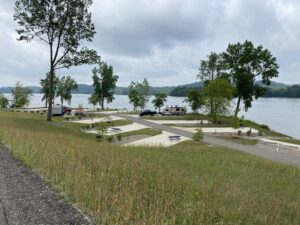
INDUSTRY TRENDS
Green Versus Gray – In the World of Stormwater, is it Really an ‘Either/Or’ Fight?
January 31, 2018 | WRITTEN BY: Shannon
By: Dave McCallops, P.E., Director, Water Resources
In some corners of the consulting world, there is still debate on the use of Green Infrastructure (GI). For most in the profession, I think it’s safe to say that we have heard comments challenging the use of GI and how effective it can be in managing stormwater runoff. In fact, some designers will only use GI if required by code, or because of client demand, and not because they see value. For many who were trained and have extensive experience with traditional “tried and true” engineering methods, the idea that GI can effectively replace “gray infrastructure” is debatable.
As a seasoned engineer, I understand the concern. At one point I was in that camp; skeptical of the value and effectiveness of GI. I thought treating stormwater was a “feel good” fad. Based on my education and experience, I clearly understood the need to treat sanitary water, but not stormwater. I thought the use of GI would fade away once the value was found to be limited. Boy, was I wrong!
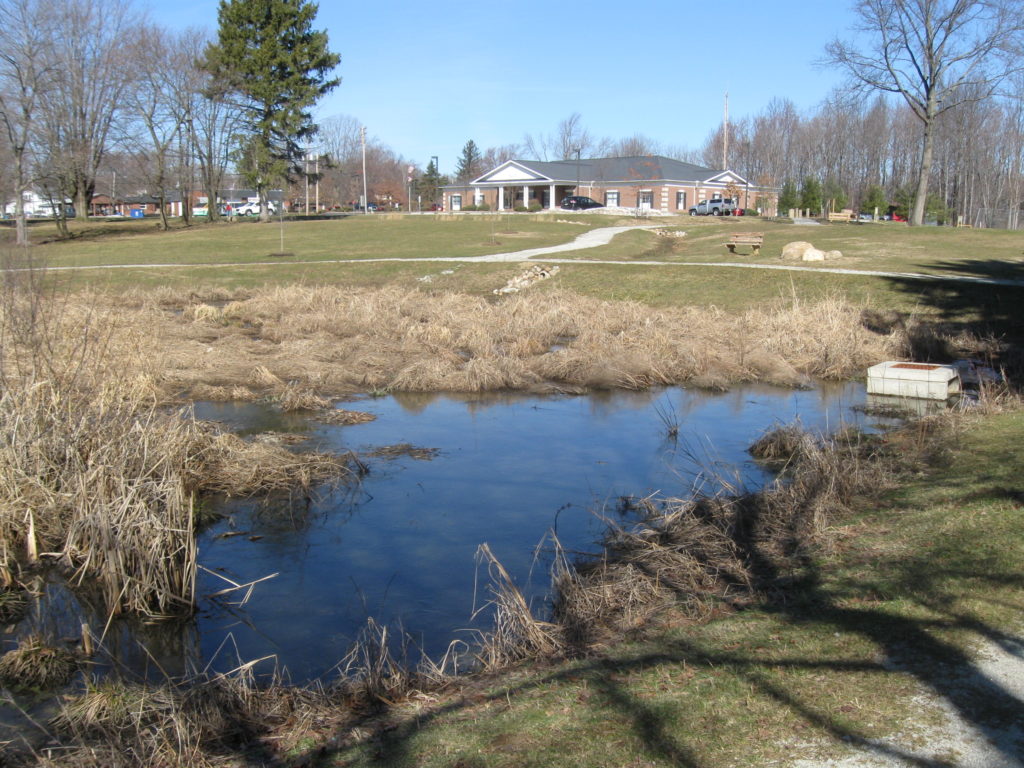
Stormwater management was introduced in northeast Ohio in the late 1980s to early 1990s because of flooding complaints and lawsuits driven by folks living downstream of new development. So, the early use of stormwater management was purely a quantity driven concept. Typically, a dry basin or wet pond would capture and temporarily hold stormwater runoff during a rainstorm. The water was slowly released to the receiving stream; this eliminated/reduced the unchecked stormwater that was creating downstream flooding. Soon after the “quantity only” phase of stormwater management, GI components were introduced. Back in the late 1990s it wasn’t known or referred to as, “Green Infrastructure” – it was just stormwater management PLUS modifications to treat stormwater.
My first introduction to GI was as the Hudson City Engineer. It was during the final stages of the design for a new business park that our city arborist, fresh from a conference about stormwater treatment in the Chesapeake Bay region, pushed to introduce a water quality component to stormwater management. I still remember my reaction when he spoke to me about the use of a bio-retention pond in lieu of a typical detention/retention system; it wasn’t very nice! I still thought it was a “feel good” fad that couldn’t provide any sort improvement. However, per the direction of the city manager, we included a forebay and a serpentine path within the stormwater management pond with varying bottom elevations along with wetland plants. Upon completion of construction, I officially completed my first GI project.
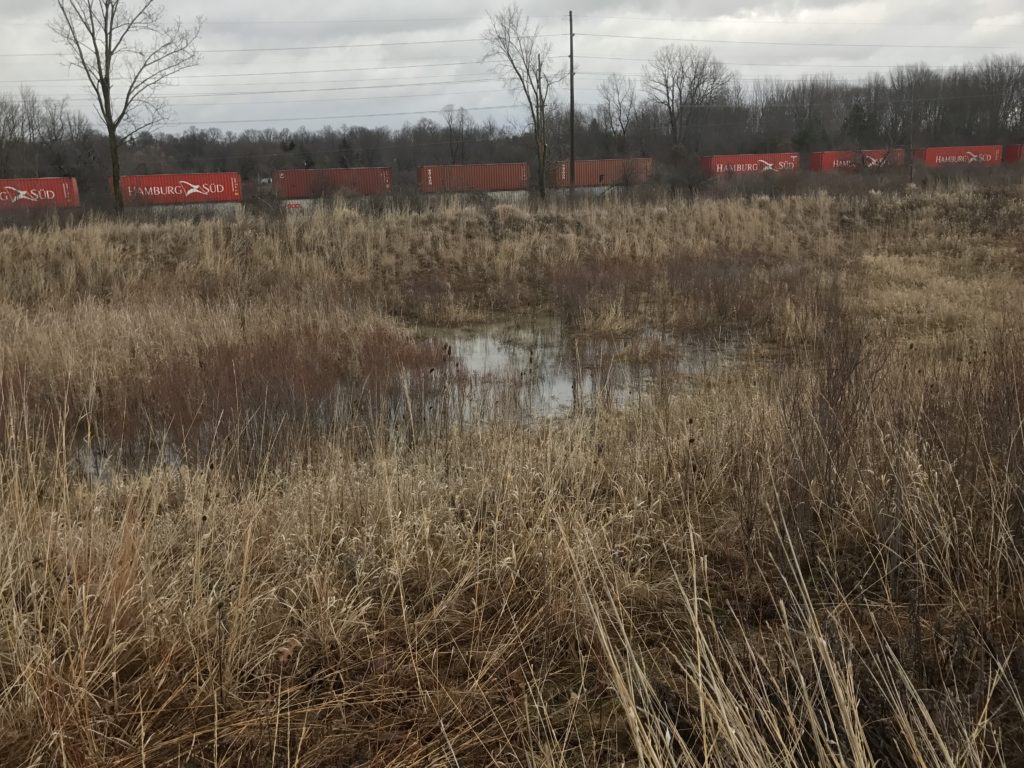
Over time I became more educated on the benefits of GI (I started hearing it called Green Infrastructure in the mid-2000s) in terms of improving the quality of stormwater. In retrospect, it’s reasonable to think that GI would have a positive impact. The use of a serpentine bottom in a bioretention pond, for example, following a forebay to trap debris, allows the water to slow down with larger particles settling out, just like the headworks and primary treatment at a wastewater plant. The use of wetland plants in GI, which uptake and absorb nutrients through their root system, is like the bacteria (or bugs, as we like to call them) that drives the biological secondary treatment process at a wastewater plant; both are naturally occurring processes that are used to improve water quality. What I found is that there is more commonality between wastewater and stormwater treatment when you take a step back to really look at each process.
There is a preconceived notion that GI is all about “green” such as plants, flowers, trees, etc. That simply is not the case. This is where “green vs gray” gets confused. The “green” in GI is really about the approach to handling and treating stormwater. An underground detention/infiltration system from Contech Solutions, for example, is a precast concrete arch system, about as “gray” in terms of color, as you will find. However, it’s not the color that determines whether it’s “green” or “gray” – it’s the intent of the process. In this case, the underground system is intended to detain the stormwater to settle out particles and pollutants and allow for the stormwater to infiltrate into the ground versus piping the stormwater to the nearest receiving stream.
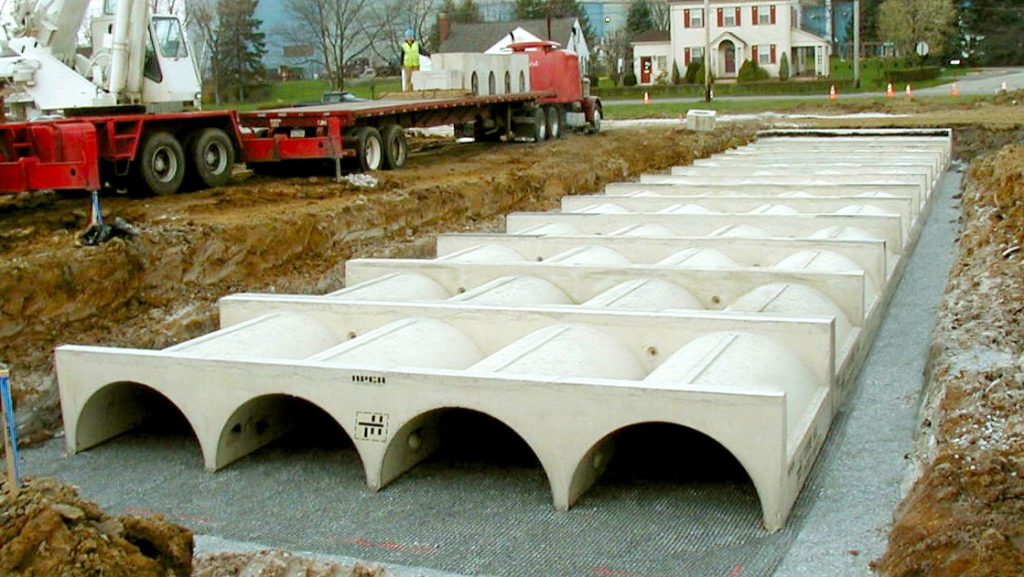
Even in areas with heavy clay soils (most of NE Ohio), the possibility for stormwater to migrate into the ground, while limited, is still better than having the stormwater drain directly into a receiving stream. Rain gardens are similar in concept. Most rain gardens have plants, a soil mix that encourages saturation and infiltration plus an underdrain discharge. It’s recognized that a rain garden probably won’t be able to capture and use all the water entering the rain garden. But, even if the excess water exits via the underdrain, the soil will filter out pollutants in the stormwater and water that is captured will provide nutrients and moisture for the plants to grow and thrive.
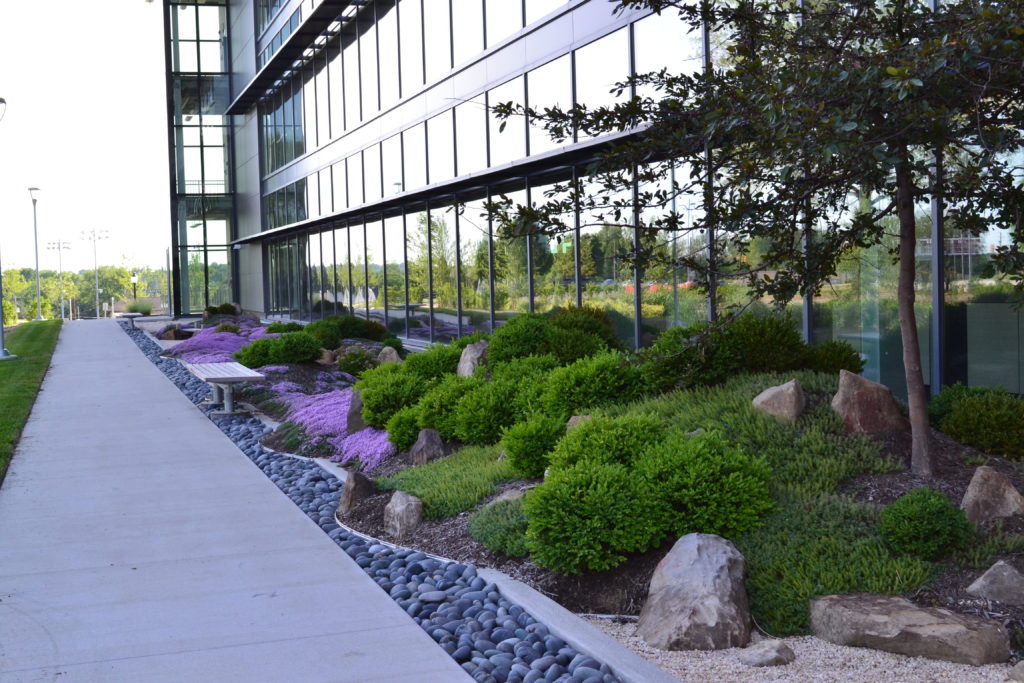
One of the biggest complaints I hear about GI is that “it requires more maintenance!” Having been in the industry over 30 years, I have witnessed the lack of resources provided to service and utility departments to properly maintain underground utilities. In many instances, flood events or sanitary backups have been created or exacerbated by blocked storm sewers or sanitary sewers that have experienced years of neglect. Only after the floodwaters have dried up and the basements have been cleaned are the blockages removed. I’m not convinced that GI requires more maintenance – I believe it requires a similar level of maintenance, though in a different format since it’s above ground. Since it’s typically visible, the resources are provided so the GI maintenance is not ignored.
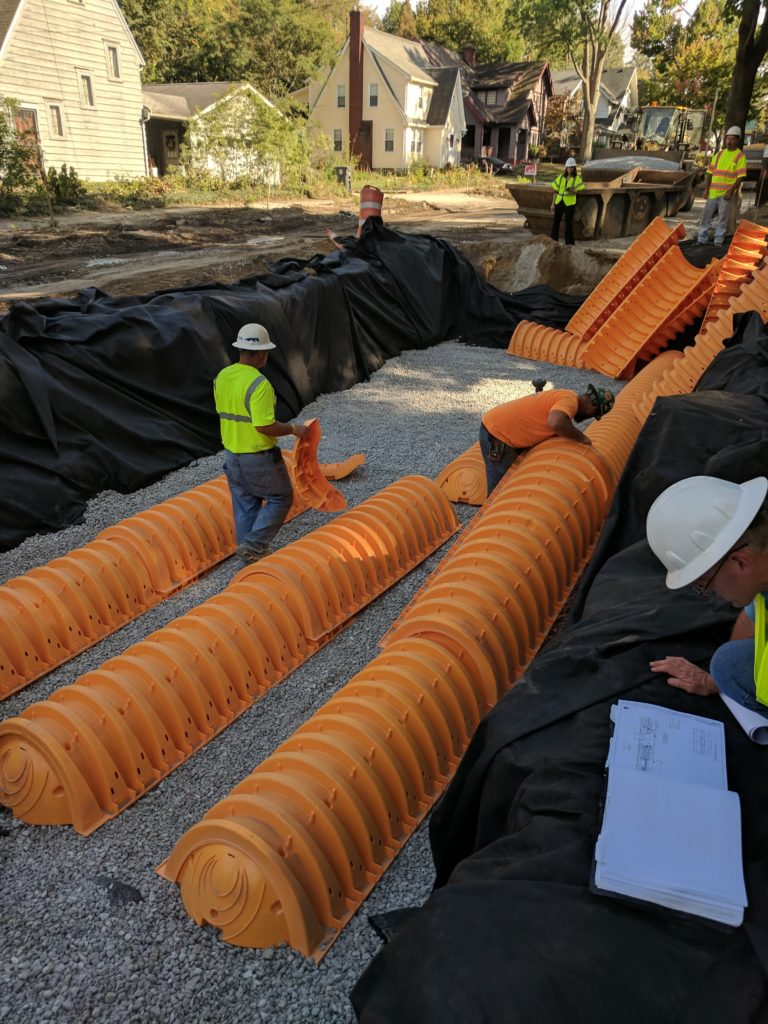
Does GI eliminate the “gray?” Of course not! The green works together with the gray to manage stormwater and protect the environment. I have a colleague who says on a regular basis, “You need the gray to get the stormwater to the green.” They both have their purpose and uses. Overall, they truly do work together – it’s NOT an either/or fight!!
RELATED TAGS:
[xyz-ips snippet=”comment-form”]


